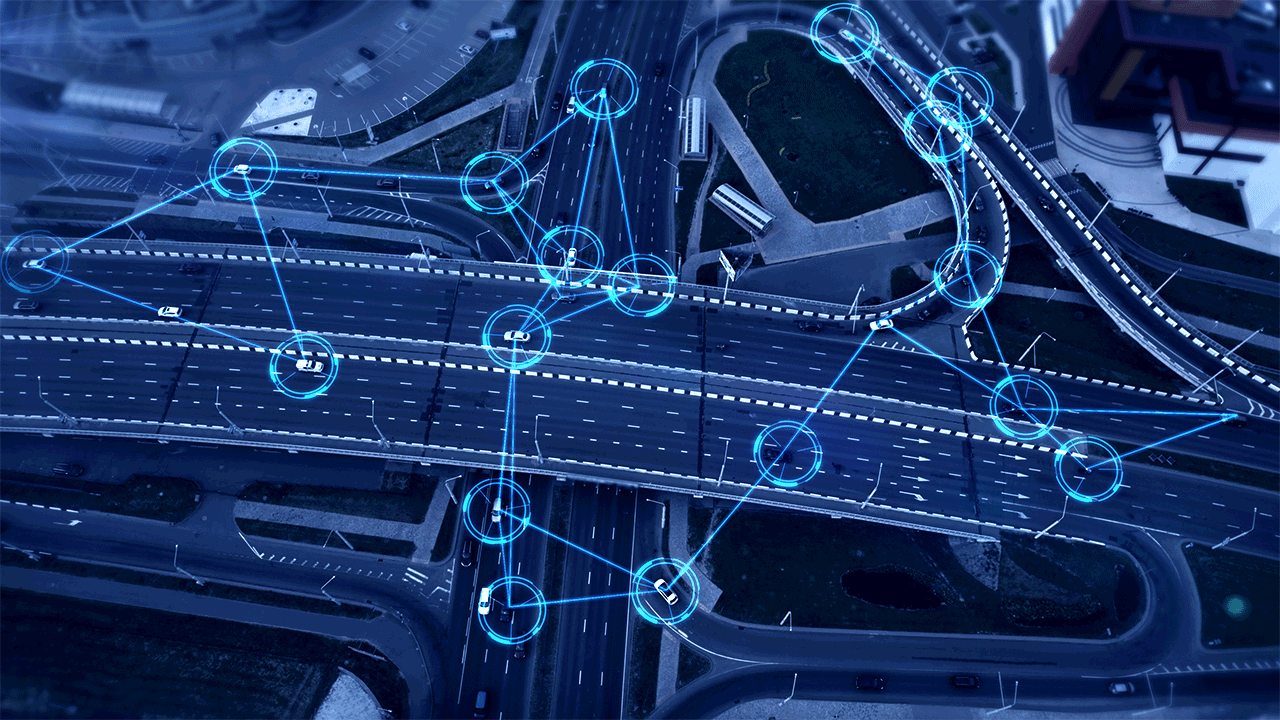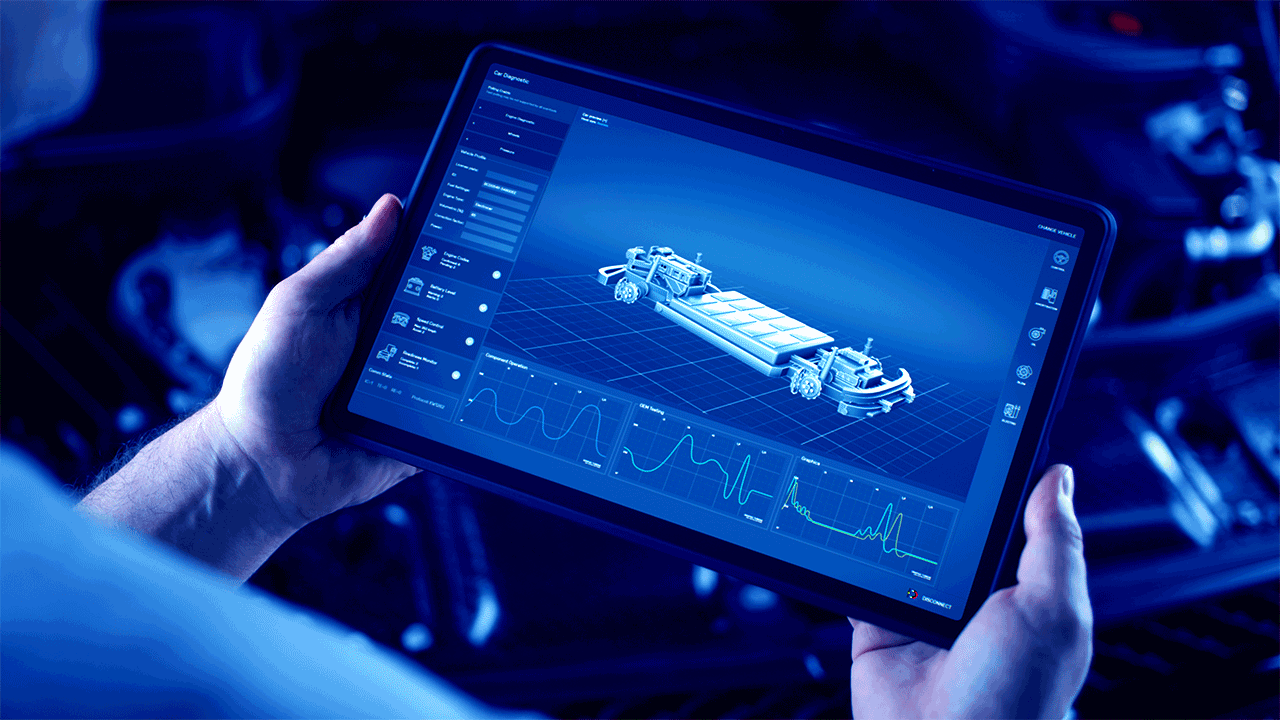How Data Analytics Enables Growth for EV Manufacturers
How Data Analytics Enables Growth for EV Manufacturers Introduction The Electric Vehicle (EV) is not new, but it has been receiving significantly...

Today, whatever field we are in, we come across the term “big data” quite often. This leads us to the question: What exactly is big data? Let us try to thoroughly understand big data and its use in the automotive industry. Here is a fun fact: In 2013, Science Daily reported that 90% of total data in the world had been generated in the last two years! Here we are, seven years later, and the humongous amount of data generated since then is beyond our scope of imagination.
A major part of LHP’s business operations revolves around the automotive world, so let us understand big data by taking an example from this industry. The connected car has been in the limelight for a few years now. It has been the basis upon which many advancements have been made to cars, having a direct impact on how the automotive industry and the car itself functions. A connected car has bidirectional data sharing with devices inside the car as well as devices in the outside world. For a person inside the car, it is important to have access to data, such as news or just audio on the go, maps, traffic warnings, weather forecast and various other real-time information. Similarly, for the outside world, insurance companies for example, it is important to have access to data about the vehicle, such as mileage, and driver skills, such as acceleration, cornering and braking, to determine the insurance rates. The car might collect and share some other data which is also important for analysis, such as fuel consumption. Data about the vehicle itself, such as system and component data, are important for maintenance and warranty purposes. When collected and stored, this information can be crucial to safety. Accidents can be avoided, and the driver/owner of the vehicle can plan their trip accordingly. Most of all, analysis of the data generated by a car increases reliability and durability while providing comfort to the owner.
To summarize, huge amounts of constantly changing data that is difficult to handle but is of enormous value on the analysis of which we can provide new and improved user experience, is “big data.” In the automotive industry, this data can improve driver safety and experience, and in short provide better and safer vehicle services.
Gartner defines big data as, “high-volume, -velocity and -variety information assets that demand cost-effective, innovative forms of information processing for enhanced insight and decision making.”
Now, if we talk about the data gathering needed for this analysis, we dive deeper into the realm of big data. In general, data is collected in a number of different ways. Again, keeping the automotive industry in focus, various data-gathering tools, such as GPS, sensors and cameras, are installed in vehicles. Capturing real-time data insights from these tools, data is then extracted and combined together to provide services. These services allow telematic-service-providing companies, car insurers, and car leasing agencies to predict movement of cars. This critical information feeds into different business models and has helped companies to understand the demand-supply for their products and services. This gives companies’ customers more customized and personalized experiences. A whole new ecosystem, enhancing user experience, is created around the usage of this data. Doesn’t this reality give us a déjà vu of “The Jetsons”?
One of the most important forms of big data analytics is predictive analysis. Predictive analysis helps to predetermine the characteristics or behavior of a machine (also human being in some situations) in certain environments and situations. I would like to share here, an example from my Neural Networks class in engineering school. While studying the concept of Feedback Neural Networks, I came across an example of a self-driving car that would train based on the feedback provided by the passenger on each trip. The rating system was to determine how smooth the trip was based on driving skills, such as speeding, braking and cornering. The self-driving car would collect this information and analyze this data to improve. With every trip, the car would get better at driving skills. This is the power of data analysis and big data. We can extract value from the massive amounts of data around us and convert it into useful information.

You must be wondering if big data can be categorized into different types for ease of handling. Yes, indeed! In general, there are three different types of big data – Structured, Unstructured and Semi-Structured. Let us understand each one of them.
Structured data is highly organized data that has a formal structure to it and can be stored, processed and retrieved seamlessly by simple search engine algorithms. Such data is usually stored and managed in a Relational Database Management System (RDBMS), where all the fields store length-delineated data, making it a simple matter to search. A very common example of such data is an employee structure in a company, where every employee’s information – from basic contact details to salary and bank account details to hierarchical details within the organization – is stored in a very well-ordered fashion.
Unstructured data is the type of data that doesn’t have a predefined schema or data model. This data can be in the form of text or images and can be human or machine generated. This type of data is usually stored in a non-relational database such as Not only Structured Query Language (NoSQL). Earlier, we said that managing and using structured data is pretty straight forward, but when it comes to unstructured data, the same is not true. Even though today there is more unstructured data (which makes up over 80% of enterprise data) than there is structured, there are many mature analytics tools available in the market for structured data, but analytics tools for mining unstructured data are nascent and developing. Commonly used examples of unstructured data are emails and other communications. However, since we are referring to the automotive industry, here’s another fun fact: Intel estimated that a car in its eight hours of operation/movement generates terabytes of data. This huge amount of data is collected from sensors, telemetry, accelerometers and many other devices, and has to be analyzed to perform calculations and adjustments required to safely navigate the car. It is wonderful how we are starting to make cars more and more intelligent, but that is a story for another day.
Then there is semi-structured data, which is a mix of structured and unstructured data. This type of data only makes up about 5%-10% of all the data. Modern databases can store both structured and unstructured data together, making them semi-structured. A few examples of semi-structured data are the Extended Markup Language (XML) and open standard JavaScript Object Notation (JSON).
In my day-to-day work life as a software developer working with LHP’s customers, I come across all three different types of big data and vote for structured data as the easiest form of data to work with. It has become a common practice to refactor and rework legacy systems to use a new structured form of data for more efficiency, better user experience, and most of all saving some big bucks. A structured form of data means clean, meaningful, reusable data that is easier to manage. It is more reasonable to adapt to storing information in a structured form than it is to make continuous attempts and spend a lot of money in trying to process, store and use unstructured and/or semi-structured forms of data.
Now that you are familiar with big data and its importance in the industry, we would like to give you some insight about how this data is processed to make it valuable. We will also discuss the tools available in the market, and which of those are better than others.
It is very hard to find one tool that fits all processing scenarios. Many enterprises in the industry are striving continuously to come up with an effective big data storage and processing tool which is also developer friendly. However, one of the key things that is usually done to make processing more manageable is breaking the data into smaller chunks and processing them in parallel. One of the most widely used techniques in computer science – divide and conquer – works well for big data processing too.
Apache Hadoop’s Highly Distributed File System (HDFS™) runs on commodity hardware. It stores and manages data by partitioning it into small blocks and processing each of these blocks separately and in parallel. It uses a concept similar to the master and clients. It is used extensively in Business Intelligence (BI), data warehousing, and Information Technology (IT) analytics. Apache Hadoop is a very popular, efficient big data processing framework with many advantages. It is easy to use and can be scaled to work with different volumes of data just as efficiently. It is open source, making it cost effective. Hadoop is fault tolerant, meaning that in case of failure, data can be recovered, no problem! It is not tightly coupled to a single programming language and supports many languages like C, C++, Perl, Python, Ruby and Groovy. Hadoop can handle a variety of data from a variety of data sources. However, it has a few concerning failure points as well. It can handle small amounts of large files but fails while handling large amounts of small files. It handles data in batches instead of streams, due to which it cannot produce real-time output with low latency. Storage and network securities are also concerning. To sum it up, Hadoop is a framework that can be used in integration with other data analytics tools. It has more advantages than disadvantages. If you are looking for a cost-effective, efficient solution to store and analyze big data, Hadoop can suit your needs.
Tableau is a good big data analytics tool, which provides visualization of data for better analysis and understanding. Human beings by nature are extremely visual. It is easier to understand something that you can see than something that requires exercising your imagination. If you want a data analytics tool that is not necessarily made for developers or programmers, Tableau is the way to go. It also provides mobile support, and apps for iOS and Android can be downloaded. However, the downside of Tableau is that since it is not made for programmers, there is no version control. Also, it is expensive, and pricing is inflexible.
Splunk is another great data analytics and visualization tool that can be used to collect and visualize machine data. It is an easy-to-deploy, easy-to-use software that is massively scalable and has real-time alerts to notify changes in data trends or activity. Splunk provides a dashboard for good visibility and also provides flexible filtering options. It can typically work with any type of data. It also has a very elegant report generation feature that can be highly beneficial based on your needs. Nevertheless, there are a few drawbacks of Splunk. It is expensive like many other tools. For complex operations and usage there is a steep learning curve, which makes it somewhat hard and time consuming to master. Reviews suggest that although data processing is fast, the interface itself is slow.
Zoho Analytics is the last data analytics tool we will talk about. This tool also focuses on data visualization, quick data insights, report generation and other functionality like the previously described tools. Zoho provides out-of-the-box integrations with several external software and applications that can be beneficial to many enterprises. This tool is less expensive compared to Tableau and Splunk. It also has a flatter learning curve when compared to the two. One of the downsides of Zoho includes slower execution of large and complex queries. Developers and users are of the view that there are areas in this software that can be worked on to make them better, such as dashboard design, handling documentation and media, communication, and collaboration.
These are just a few of the many tools available in the market today. Most of these tools perform operations and data processing on the underlying framework or database and export it in a nice package onto a good interface.
The importance of harvesting value from big data in the automotive world today cannot be overstated. As a leader in automotive engineering, LHP recognized this and has had a dedicated Data Analytics and IoT team since 2016. Paired with LHP’s deep expertise in the engineering realm, the Data Analytics team has seen exponential growth each year, with dozens of team members working not only in the global automotive space, but also in manufacturing, healthcare, finance, agriculture and more. With end-to-end support, the Data Analytics team takes a holistic approach to your toughest big data problems through careful application of people, processes and technology.
Here at LHP, we leverage both engineering and data analytics expertise seamlessly to provide several solutions that can be beneficial for companies to create a connected workspace and take into consideration results from complex data analysis while making business decisions. This is what makes us unique. We bring together Internet of Things (IoT) and big data to help solve business issues and provide options for better monitoring and service of intelligent applications. Feel free to contact us for more information on our products and services.

How Data Analytics Enables Growth for EV Manufacturers Introduction The Electric Vehicle (EV) is not new, but it has been receiving significantly...

What is the Importance of a Data-driven User Experience in Automotive?

How Full Stack Consulting Best Accelerates Your Digital Transformation Introduction Data analytics is a discipline that enables organizations to...